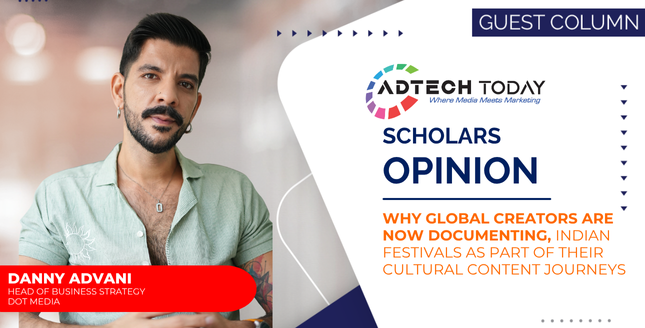

Let me start by saying one simple line, ‘Culture is a topic that Connects’
Festivals used to be an experiential event for tourism boards to pull in audiences to their countries, states etc for making the world experience what their culture is. Even today Airbnb sells experiences and now more than ever, BMS & Districts of the world are seeing a high volume in culture first events.
Today India’s festival calendar is no longer just a tourist attraction it’s become a content framework. Why is it a content framework is not because the internet said so but it’s been a multitude of actions, planning and tie ups that the country has done globally to create that recognition. Our country has made sure that we are seen on the world map with their efforts in politics, Bollywood and philanthropy. Across Instagram, YouTube, Snapchat etc. Creators from the US, Europe, Southeast Asia, and the Middle East are increasingly shaping their content timelines around Indian cultural festivals from Diwali and Holi to Navratri, Eid, Durga Puja, and Onam. You ask why? Keep reading, the answer is below.
Why This Trend Is Exploding
Indian festivals have always been a colorful experience either with the colors of holi or with the fabrics adorned during the festival season to the rangolis and artworks that are painted at the foot of our doors and temples.
These allow the creators and users to break their content narrative and go beyond. It makes them culturally relevant and pulls in audiences who are drawn to this subject of content and creates higher engagement.
It’s sticky & shareable content wrapped in the novelty of culture — ideal for algorithm-driven platforms.
The internet has allowed us to be more culturally aware or exposed to world cultures. We saw a boom in the art ecosystem in India thanks to NMACCs of the world and the ever proud Kala Ghoda Arts Festival that pushed the envelope. India has embraced newer cultures as a reason to celebrate Halloween, Fathers Day, Mothers Day and the recent example, Don Julio leveraging the global culture to own the space of the Day of The Dead to create a large-scale event under the cultural belt. The result? Audience footfall, shareability and share of voice. Yes, the millennials did it first but the Gen – z who are born on the internet made it really take it forward. Gen Z are showing stronger interest in experiential authenticity over postcard travel.
Whoever thought a Cold Play concert would be a Gen Z success? The millennials definitely did not!
It’s similar to Airbnb’s home stay experience rather than a tourist visit. Immerse yourself in the culture and they will always speak of their experience from a place of love vs hey they have cool bars and clubs to party at!
Creators like Eva Zu Beck, Nas Daily, and Tolt Around the World have all documented Indian festivals — not as one-off reels, but as multi-part, narrative-led stories across platforms. Their comment sections are beyond “Looks fun!” — they’re filled with Indians explaining customs
Engagement, in other words, becomes community-fuelled education.
Let’s see the Data
The Indian influencer marketing industry is projected to reach ₹3,375 crore by 2026, growing at a CAGR of 18%+ (EY Report).
But what are the creators benefitting from this?
Creators today are smarter, they aren’t chasing trends. They are now a part of the larger cultural eco system called the internet. Creating the obvious content is hygiene for them, exactly what talent management is to influencer agencies. But cultural content pushes them a step ahead. Here are 3 pillars that come to mind:
India’s festivals are no longer just “moments” — they are culture first story arcs. For global creators, they offer colour, culture, connection, and community. For brands, they offer layered storytelling, emotional hooks, and scalable engagement.
The shift signals something larger than algorithm-chasing: it’s a recognition that Indian culture is not just colourful — it’s globally consumable, deeply engaging, and strategically valuable.